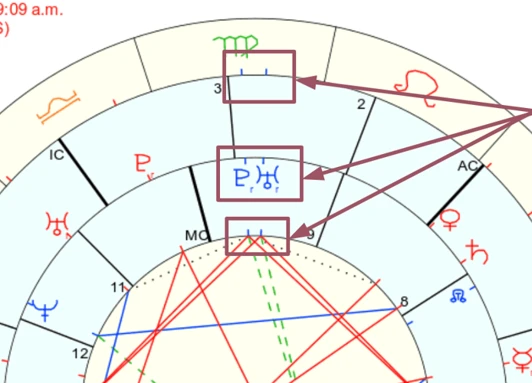Astrology has long been a fascinating subject, intertwining the mysteries of the cosmos with our everyday lives. One aspect of astrology that holds particular intrigue is the impact of astrological aspects in natal chart synastry. These aspects, such as conjunctions, oppositions, trines, squares, sextiles, and quincunxes, reveal the dynamic interactions between planets and how they influence our relationships. In this comprehensive guide, we will delve into the significance of these aspects in synastry, exploring their role in compatibility, challenges, growth, and transformation. Through case studies and expert analysis, we will uncover the interplay of planets and aspects, providing valuable insights and tips for navigating the complexities of astrological aspects in relationships. Whether you’re a novice or seasoned astrologer, this article will deepen your understanding of the cosmic forces that shape our connections with others.
Contents
- The Basics of Astrological Aspects
- An Overview of Natal Chart Synastry
- The Significance of Astrological Aspects in Synastry
- The Interplay of Planets and Aspects
- Case Studies: Analyzing Astrological Aspects in Synastry
- Tips for Navigating Astrological Aspects in Relationships
- Conclusion
-
Frequently Asked Questions
- 1. What is the significance of astrological aspects in natal chart synastry?
- 2. How do conjunctions affect relationships in synastry?
- 3. What challenges can arise from oppositions in synastry?
- 4. What benefits can trines bring to relationships in synastry?
- 5. How do squares impact relationships in synastry?
- 6. What opportunities can arise from sextiles in synastry?
- 7. How do quincunxes influence relationships in synastry?
- 8. What are personal planets and how do they impact synastry?
- 9. What role do outer planets play in synastry?
- 10. What differentiates major aspects from minor aspects in synastry?
- References
-
Frequently Asked Questions
- 1. How do astrological aspects in natal chart synastry impact relationships?
- 2. What are the different types of astrological aspects?
- 3. What is the significance of astrological aspects in synastry?
- 4. How do personal and outer planets interplay with astrological aspects?
- 5. What is the difference between major aspects and minor aspects in synastry?
- 6. Can astrological aspects indicate compatibility and harmony in relationships?
- 7. How do astrological aspects contribute to challenges and friction in relationships?
- 8. Do astrological aspects facilitate growth and transformation in relationships?
- 9. What can a Sun-Moon conjunction indicate in synastry?
- 10. How can communication and understanding help navigate astrological aspects in relationships?
- References
- Read More
The Basics of Astrological Aspects
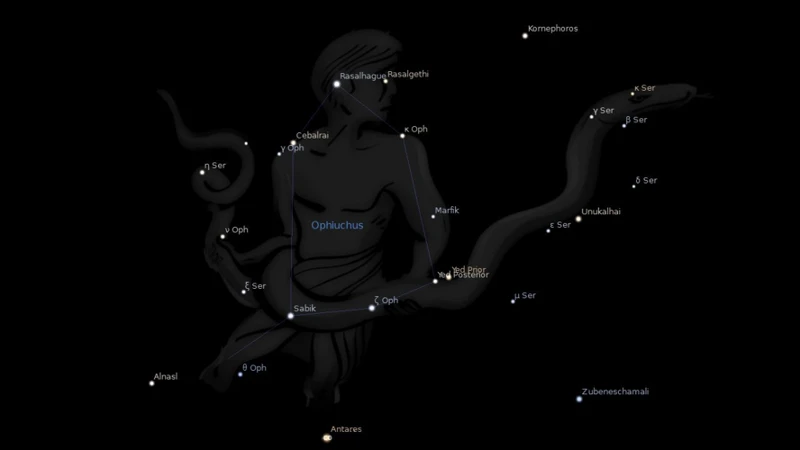
Astrological aspects are key elements in understanding the complex interplay between planets in astrology. These aspects represent the geometric angles formed between planets and indicate the various energies and potentials at play. There are six common aspects that astrologers analyze: conjunction, opposition, trine, square, sextile, and quincunx. A conjunction occurs when two planets are in close proximity, merging their energies and intensifying their influence. An opposition arises when two planets are directly across from each other, creating a tension of opposing forces. A trine forms a harmonious angle of 120 degrees, fostering ease and flow between planets. On the other hand, a square presents a challenging angle of 90 degrees, creating internal and external friction. A sextile manifests as a supportive aspect of 60 degrees, facilitating opportunities for growth and cooperation. Lastly, a quincunx signifies an aspect of 150 degrees, generating a sense of dissonance and requiring adjustment. Understanding these aspects forms the foundation for comprehending the dynamics and potentials within a natal chart synastry. [link to /how-do-eclipses-occur/]
1. Conjunction
A conjunction is a powerful and significant astrological aspect that occurs when two planets are closely aligned in the same zodiac sign or very close to each other. This alignment creates a merging of energies, intensifying the influence of both planets and creating a potent force within a natal chart synastry. When planets are in conjunction, their energies combine and work together, symbolizing unity, synergy, and a blending of qualities. This can manifest in various ways depending on the specific planets involved. For example, a conjunction between the Sun and the Moon signifies a strong sense of self-awareness and emotional depth. Similarly, a conjunction between Venus and Mars can indicate a passionate and harmonious connection between love and desire. However, it’s essential to note that not all conjunctions are positive, as some can also amplify challenging or conflicting energies. For instance, a conjunction between Saturn and Pluto may indicate intense power struggles or transformative experiences. Understanding the dynamics of a conjunction is crucial in analyzing the strengths, challenges, and potentials within a relationship or individual’s natal chart. Exploring the specific planets involved in a conjunction and their positions within the zodiac sign can provide deeper insights into the unique qualities and themes expressed in an individual’s life. [link to /ophiuchus-symbol-personality-traits/]
2. Opposition
An opposition is a powerful astrological aspect that occurs when two planets are directly across from each other in the natal chart. This aspect forms an angle of 180 degrees, creating a tension between the energies of the planets involved. The opposition represents a duality and a sense of polarity, where two opposing forces are at play. It often signifies a relationship of contrasts and challenges, as the planets involved may have conflicting needs and desires. However, this opposition also holds immense potential for growth and integration. It can serve as a catalyst for self-awareness and understanding as we navigate the inherent tension within ourselves and our relationships. The key to harnessing the power of this aspect lies in finding balance and learning to integrate the opposing qualities. When properly understood and harnessed, the opposition can be a source of strength and complementarity in our lives. [link to /planetary-alignments-predicting-natural-disasters/]
3. Trine
A trine is one of the most harmonious and favorable astrological aspects. It occurs when two planets are approximately 120 degrees apart, forming a smooth, flowing connection between them. The energy of the trine is characterized by a sense of ease, synergy, and natural talent. Trines often bring forth opportunities, gifts, and talents that come effortlessly to individuals or relationships. This aspect promotes cooperation, understanding, and positive interactions between the planets involved. It signifies a supportive and beneficial relationship, where the energies of the planets blend and complement each other seamlessly. Trines can enhance creativity, spirituality, and personal growth, as well as foster harmonious relationships and social connections. This aspect encourages individuals to embrace their strengths and abilities, allowing them to thrive in various areas of life. It is important to note that while trines can bring favorable outcomes, they can also generate complacency or a lack of motivation if not utilized consciously. [link to /ophiuchus-symbol-personality-traits/]
4. Square
– A square aspect occurs when two planets are approximately 90 degrees apart in the zodiac. This angle creates a sense of tension, challenge, and conflict between the planets involved.
– The square is often considered one of the most potent and influential aspects in astrology due to its dynamic nature. Its energy can be likened to a cosmic friction that pushes us to grow and evolve.
– When two planets form a square in a natal chart synastry, their energies clash, creating a sense of inner conflict and external challenges in the relationship. This can manifest as power struggles, disagreements, and a constant need to find balance.
– Despite the inherent difficulties associated with squares, they also hold tremendous potential for growth and transformation. The tension created by the square aspect can act as a catalyst for change, prompting individuals to confront their limitations and make necessary adjustments.
– Square aspects require conscious awareness and effort to navigate successfully. By acknowledging the areas of conflict and actively working towards resolution, individuals can harness the transformative power of squares to bring about positive change and personal growth.
– It is important to note that the specific planets involved in a square aspect, along with their respective signs and houses, greatly influence the nature and expression of the square. Each square is unique, and its impact in synastry will depend on the overall dynamics of the individuals involved.
– Ultimately, the square aspect serves as a reminder that growth often arises from tension and challenge. Embracing the lessons and opportunities for growth presented by squares can lead to profound personal and relational development.
5. Sextile
A sextile is an astrological aspect that occurs when two planets are approximately sixty degrees apart from each other. It is considered a favorable aspect, creating opportunities for growth, harmony, and cooperation between the planets involved. When planets form a sextile, their energies blend effortlessly, allowing for a smooth exchange of qualities and talents. This aspect is associated with ease, creativity, and positive interactions. The sextile encourages individuals to explore new avenues and embrace cooperative endeavors. It enhances communication and collaboration, facilitating the sharing of ideas and joint problem-solving. The planets involved in a sextile work together synergistically, complementing each other’s strengths and abilities. This aspect promotes a sense of balance and mutual support, making it easier for individuals to work harmoniously towards common goals. Harnessing the energy of a sextile can lead to personal growth, development, and fruitful relationships.
6. Quincunx
A quincunx is a fascinating astrological aspect that involves an angle of 150 degrees between two planets. This aspect creates a unique dynamic where the energies of the planets involved seem to clash or operate on different wavelengths. The quincunx often brings a sense of unease, requiring adjustment and adaptability to navigate its complexities effectively.
When two planets form a quincunx, they may have difficulty understanding each other’s motivations and desires. They operate in different realms and have contrasting needs, which can lead to a feeling of disconnect or misunderstanding. There is a sense of constant adjustment and compromise required to find a harmonious balance in their interactions.
The quincunx aspect can manifest in many ways in a relationship or synastry analysis. For example, it may signify a mismatch in communication styles, where one person prefers logical, direct communication while the other leans towards emotional and intuitive expression. This difference can lead to misunderstandings and frustration unless both individuals make a conscious effort to bridge the gap and find common ground.
It’s important to note that the quincunx is not inherently negative. While it may present challenges, it also offers unique opportunities for growth and transformation. The friction generated by the quincunx can push individuals to step out of their comfort zones and expand their perspectives. It encourages personal growth and the development of empathy and understanding for different ways of being.
In synastry, the quincunx aspect can act as a catalyst for personal and relational growth. It challenges both individuals to confront their biases and preconceived notions, fostering a deeper level of self-awareness and empathy. With conscious effort and open communication, the quincunx can become a source of strength rather than a point of contention in a relationship.
The quincunx aspect brings a unique set of dynamics to a natal chart synastry. Its presence highlights areas of potential growth and challenges in a relationship. By embracing the need for adjustment and compromise, individuals can navigate the complexities of the quincunx and harness its transformative energies.
An Overview of Natal Chart Synastry
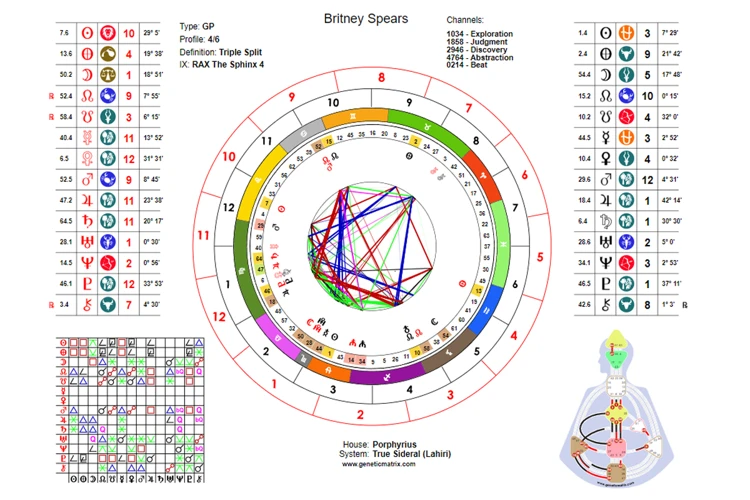
Natal chart synastry is an essential component in astrology, delving into the intricate connections and interactions between two individuals through the comparison of their birth charts. This process involves overlaying one person’s natal chart onto the other’s, analyzing how their planets, houses, and aspects interact with each other. Through natal chart synastry, astrologers can gain valuable insights into the dynamics, strengths, and challenges within a relationship. Here are some key aspects to consider when exploring the intricacies of natal chart synastry:
1. Planetary Connections: One of the primary factors in natal chart synastry is analyzing the interplay of planets between two individuals. Pay attention to planetary aspects, such as conjunctions, oppositions, trines, squares, sextiles, and quincunxes, discussed in the previous section. These aspects reveal the potential for compatibility, attraction, and challenges between the individuals.
2. House Overlays: The interaction of the houses in the birth charts is another crucial factor in natal chart synastry. By examining which areas of life are emphasized in each individual’s chart, astrologers can uncover the common themes, goals, and areas of focus within the relationship. The house overlays provide insights into the areas where the individuals are likely to connect, grow, and face challenges together.
3. Ascendant and Descendant: The ascendant represents our external personality, while the descendant signifies what we seek in a partner. When assessing natal chart synastry, understanding how each person’s ascendant and descendant interact can shed light on the initial attraction and compatibility between the individuals. A harmonious interaction can indicate a sense of balance and shared values, while challenging aspects may highlight areas that require growth and understanding.
By examining these key factors and more, astrologers can offer valuable insights and guidance about the potential strengths and challenges within a relationship. Natal chart synastry enables individuals to gain a deeper understanding of the dynamics, expectations, and growth opportunities present in their connections with others. It serves as a powerful tool for self-awareness, enhancing the potential for harmonious and fulfilling relationships./
The Significance of Astrological Aspects in Synastry
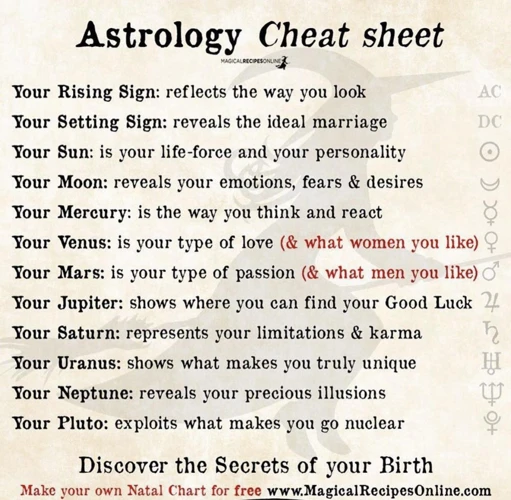
The significance of astrological aspects in synastry cannot be overstated. These aspects serve as the building blocks of relationships, offering valuable insights into compatibility, challenges, and opportunities for growth. A conjunction between two people’s planets indicates a strong bond, shared interests, and a sense of unity. An opposition in synastry highlights the polarities and differences between individuals, which can lead to both attraction and tension. Trines bring a harmonious flow and compatibility, fostering mutual understanding and support. Conversely, squares signify areas of friction, conflict, and potential growth through overcoming challenges. Sextiles in synastry indicate areas of ease, cooperation, and shared opportunities for growth. Lastly, the quincunx presents a sense of unease and requires adjustments and compromises to find a balance. By assessing and understanding these aspects, individuals can gain deeper insights into the dynamics of their relationships, enabling them to navigate challenges, embrace growth, and foster harmony.
1. Compatibility and Harmony
When analyzing astrological aspects in natal chart synastry, one of the primary considerations is the level of compatibility and harmony between individuals. Certain aspects can indicate a strong affinity and synchronization between two people, fostering a deep sense of understanding and connection. For example, a trine aspect suggests a natural flow of energy and a harmonious blending of qualities, leading to compatibility and ease in the relationship. Similarly, a sextile aspect signifies a supportive and cooperative dynamic that promotes harmony and mutual growth. These aspects indicate that the individuals’ energies and personalities are likely to complement each other, creating a sense of ease and comfort in their interactions. Conversely, challenging aspects, such as a square or opposition, may introduce friction and contrasting qualities, requiring effort and compromise to maintain harmony. However, even conflicting aspects can stimulate growth and understanding if both individuals are willing to put in the necessary work. By assessing the compatibility and harmony indicated by astrological aspects, we gain valuable insights into the potential strengths and challenges of a relationship. [Internal link to /ophiuchus-symbol-personality-traits/]
2. Challenges and Friction
When it comes to analyzing the impact of astrological aspects in synastry, the aspect of challenges and friction holds significant importance. These aspects, such as squares and oppositions, create a dynamic tension between the planets involved. A square, which occurs at a 90-degree angle, represents a clash of energies, triggering conflicts and obstacles in the relationship. This aspect can bring about power struggles, arguments, and a sense of unease between individuals. Similarly, an opposition aspect, where planets are directly across from each other, creates a strong polarization within the relationship. This can lead to conflicting desires, contrasting opinions, and a constant push-pull dynamic. While these aspects may introduce difficulties, they also offer opportunities for growth and transformation. They compel individuals to confront their differences, fostering personal development and a deeper understanding of one another. It is through navigating these challenges and finding common ground that relationships can strengthen and evolve. It is important to approach these aspects with patience, open communication, and a willingness to work through conflicts, allowing the relationship to grow stronger despite the initial friction.
3. Growth and Transformation
The aspect of growth and transformation in astrology refers to the potential for personal and relational development that can arise within the context of astrological aspects in synastry. When certain aspects are present, they can act as catalysts for growth and transformation, leading to profound shifts in individuals and their relationships. Here are some key points to consider regarding the impact of astrological aspects on growth and transformation:
1. Stimulating Evolution: Challenging aspects, such as squares and oppositions, can push individuals to confront their limitations and evolve beyond their comfort zones. These aspects often bring about opportunities for growth through the resolution of conflicts and the development of inner strength.
2. Catalyzing Change: Certain aspects can serve as triggers for transformational changes. Conjunctions and oppositions, for example, may intensify the energies between two individuals, leading to powerful shifts in their dynamics and personal growth. These aspects can bring about significant changes in relationships, beliefs, and life paths.
3. Encouraging Self-Awareness: Aspects can act as mirrors, reflecting back aspects of ourselves that we may not be fully aware of. For instance, a trine aspect between two individuals’ sun signs can highlight shared values and strengths that enhance personal growth and mutual understanding.
4. Paving the Way for Healing: Some aspects, like sextiles and trines, create a supportive and harmonious flow of energy between individuals. These aspects can facilitate healing processes and provide a nurturing environment for growth and transformation.
5. Fostering Emotional Depth: Certain aspects, such as conjunctions or trines involving the Moon, can deepen emotional connections between individuals. This can lead to increased emotional awareness and a transformation of how individuals express and navigate their feelings within relationships.
6. Spurring Spiritual Awakening: Astrological aspects can also have a profound impact on individuals’ spiritual journeys. The presence of certain aspects, like conjunctions involving outer planets such as Neptune or Uranus, can ignite a spiritual awakening, prompting individuals to explore deeper existential questions and seek higher levels of consciousness.
By understanding the potential for growth and transformation within astrological aspects, individuals can navigate their relationships with greater awareness and harness the transformative power of these cosmic influences. Whether it involves facing challenges, embracing change, or seeking personal evolution, the interplay of astrological aspects in synastry provides a rich and transformative landscape for individuals and their relationships.
The Interplay of Planets and Aspects
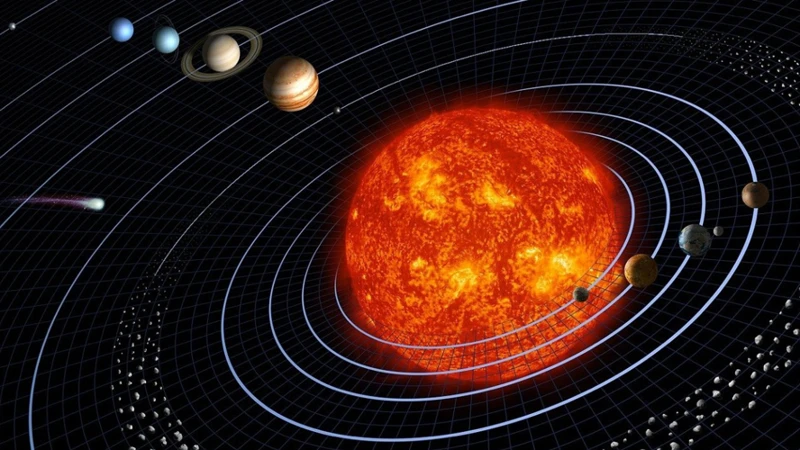
In astrology, the interplay between planets and aspects creates a rich tapestry of influences that shape our lives and relationships. Understanding how different planets interact through aspects is essential in interpreting and analyzing a natal chart synastry. Personal planets, such as the Sun, Moon, Mercury, Venus, and Mars, play a significant role in shaping our individual personalities and how we express ourselves in relationships. They are often the driving forces behind compatibility and attraction. On the other hand, outer planets, such as Jupiter, Saturn, Uranus, Neptune, and Pluto, represent larger societal and generational themes, influencing our spiritual growth, transformation, and the broader dynamics of our relationships. Additionally, the distinction between major aspects (conjunction, opposition, trine, square, sextile) and minor aspects (quincunx, semisquare, sesquiquadrate) is crucial. Major aspects tend to have a more noticeable impact, while minor aspects add subtlety and nuance to the dynamics between planets. By understanding the interplay of planets and aspects, astrologers can gain deeper insight into the intricacies of relationships and provide guidance on navigating their complexities.
1. Personal Planets
When analyzing astrological aspects in synastry, a crucial aspect to consider is the influence of personal planets. Personal planets, including the Sun, Moon, Mercury, Venus, and Mars, play a significant role in shaping an individual’s personality and desires. Each of these planets represents different aspects of our psyche and influences various areas of our lives.
1. The Sun, the central force in astrology, symbolizes our core essence, ego, and identity. When the Sun of one person forms an aspect with the personal planets of another person, it can bring a sense of vitality, attraction, and compatibility.
2. The Moon, representing emotions and instincts, is another crucial personal planet. Aspects between Moon signs in synastry can indicate the emotional compatibility and responsiveness between two individuals. Moon aspects play a significant role in understanding a couple’s emotional connection and overall compatibility.
3. Mercury, the planet of communication and intellect, governs how we express ourselves and process information. When Mercury aspects come into play in synastry, they can indicate harmony or discord in communication styles and mental compatibility. The flow of ideas, thoughts, and intellectual connection can be influenced by the aspects formed.
4. Venus, the planet of love and beauty, represents how we relate to others, our values, and our approach to relationships. When Venus aspects occur in synastry, they can reflect the romantic and sensual dynamic between two individuals. Positive Venus aspects may indicate a strong attraction, shared values, and a harmonious connection.
5. Mars, the planet of action and desire, governs our passions, ambitions, and sexual energy. Mars aspects in synastry can reveal the level of physical attraction, sexual compatibility, and drive for achievement between two individuals. Positive Mars aspects can bring vitality, passion, and motivation into a relationship.
Understanding the interplay between these personal planets and their aspects in synastry is essential to gain insights into compatibility, attraction, and overall dynamics within a relationship. Each personal planet adds its unique flavor to the connection, shaping the course of the partnership.
2. Outer Planets
The outer planets in astrology play a significant role in synastry and offer profound insights into the dynamics of relationships. These planets, namely Uranus, Neptune, and Pluto, operate on a collective and transpersonal level, impacting not only the individual but also the larger societal and generational context. When these outer planets form aspects in synastry, they bring about transformative and powerful energies that can either harmonize or challenge the connection between individuals. Uranus represents uniqueness, innovation, and sudden change. When it interacts with personal planets of another individual in a synastry chart, it introduces excitement, spontaneity, and a desire for freedom. Neptune, the planet of spirituality, dreams, and illusions, brings a sense of idealism, compassion, and empathy when it forms aspects in synastry. However, it can also blur boundaries and create confusion within the relationship. Pluto governs transformation, power dynamics, and deeper psychological processes. Its aspects in synastry often indicate intense magnetic connections, obsession, and renewal. These outer planets have a profound impact on the overall dynamics and potential growth of a relationship, and understanding their influence is crucial in deciphering the complexities of synastry.
3. Major Aspects vs. Minor Aspects
When examining the astrological aspects in synastry, it is important to differentiate between major aspects and minor aspects. Major aspects are those that have a significant impact on the dynamics of the relationship, while minor aspects provide additional nuances and subtleties. The major aspects include the conjunction, opposition, trine, and square. These aspects represent potent energies that greatly influence the interaction between planets. For example, a conjunction signifies a powerful blending of energies, where planets join forces and create a sense of unity. An opposition, on the other hand, presents a polarity between planets, which can lead to both attraction and tension within the relationship. The trine fosters harmony and alignment between planets, facilitating a natural flow of energy. Additionally, the square aspect introduces challenges and conflict, which, when navigated successfully, can lead to growth and transformation. On the other hand, minor aspects such as the sextile and quincunx offer additional layers of influence. A sextile encourages opportunity and cooperation, serving as a supportive force within the relationship. A quincunx presents a sense of discordance, requiring adjustments and adaptability. Although minor aspects may not carry the same weight as major aspects, their inclusion can provide valuable insights into the intricacies of a relationship. By considering both major and minor aspects in synastry, astrologers can gain a more comprehensive understanding of the dynamics and potential challenges within a partnership.
Case Studies: Analyzing Astrological Aspects in Synastry
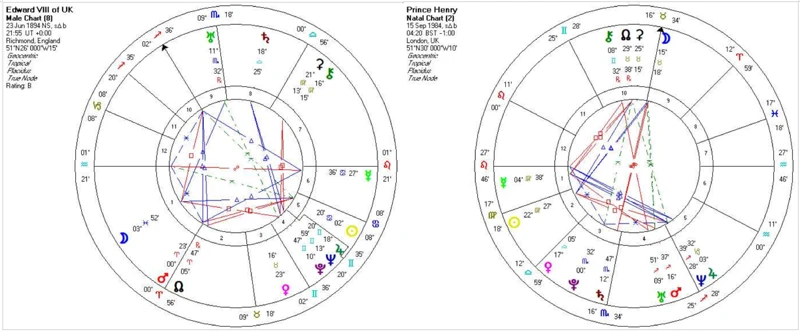
In order to gain a deeper understanding of the impact of astrological aspects in synastry, let’s explore some intriguing case studies. One fascinating aspect to analyze is the Sun-Moon conjunction, which signifies a deep emotional connection and a strong sense of compatibility between individuals. This aspect indicates a harmonious blending of the conscious (Sun) and unconscious (Moon) aspects of the self, promoting mutual understanding and emotional attunement. Another compelling aspect is the Mars-Venus square, which often engenders intense passion and sparks dynamic interactions in relationships. This aspect can create both attraction and friction, as the assertive nature of Mars clashes with the harmonious and pleasure-seeking qualities of Venus. Lastly, the Jupiter-Saturn opposition brings together the expansive and optimistic energy of Jupiter with the structured and disciplined energy of Saturn. This aspect often leads to a balance between growth and stability in a partnership, but can also present challenges when these two energies collide. These case studies illustrate the intricacies and significance of astrological aspects in synastry, highlighting how the interplay of planets shapes the dynamics of relationships.
1. Sun-Moon Conjunction
A Sun-Moon conjunction is a powerful aspect in synastry that occurs when someone’s Sun is in close proximity to another person’s Moon in their natal charts. This alignment creates a deep connection and mutual understanding between individuals. The Sun represents our core identity, vitality, and conscious ego, while the Moon represents our emotions, intuition, and subconscious mind. When these two luminaries come together, there is an integration of the individual’s sense of self with their emotional and instinctual needs. The Sun-Moon conjunction fosters a sense of harmony, empathy, and emotional resonance within the relationship. These individuals have a natural affinity and a strong emotional bond that enhances their overall compatibility. They have an innate understanding of each other’s needs and can provide the emotional support and validation that is essential for a healthy partnership. This aspect also signifies a shared sense of purpose and a mutual drive to nurture and support one another’s growth. The Sun-Moon conjunction encourages emotional intimacy, deep connection, and a profound sense of belonging. However, it is essential to remember that while this aspect brings many positive qualities to a relationship, it does not guarantee a conflict-free partnership. Like any aspect, there may still be challenges and complexities to navigate, but the foundation of emotional understanding and compatibility provided by the Sun-Moon conjunction is invaluable.
2. Mars-Venus Square
The Mars-Venus square is a dynamic aspect in astrological synastry that generates a compelling blend of passion, attraction, and tension. When Mars, representing assertiveness, desire, and drive, forms a square aspect (a 90-degree angle) with Venus, symbolizing love, harmony, and affection, a complex interplay ensues. This alignment tends to create a push-pull dynamic within relationships, where the assertive and passionate nature of Mars clashes with the need for harmony and emotional connection represented by Venus. The square aspect can lead to intense chemistry, sparking initial attraction and infusing relationships with excitement and sexual tension. However, challenges may arise due to the contrasting ways that Mars and Venus approach love and romance. Mars’ direct and aggressive energy can clash with Venus’ desire for peace and harmony, leading to conflicts and power struggles. It is important for individuals with this aspect in their synastry to find a balance between assertiveness and compromise, and to develop effective communication skills to navigate any conflicts that may arise. The Mars-Venus square can be both exhilarating and challenging, but with awareness, understanding, and a willingness to work through differences, it has the potential to lead to growth and transformation within relationships.
3. Jupiter-Saturn Opposition
The Jupiter-Saturn opposition is a powerful and transformative astrological aspect that occurs when Jupiter and Saturn are directly across from each other in a natal chart. This opposition creates a dynamic tension between expansion and limitation, bringing both opportunities for growth and challenges to overcome.
Jupiter represents expansion, abundance, and optimism, while Saturn symbolizes structure, discipline, and responsibility. When these two planets oppose each other, their energies clash, often creating a push and pull between the desire for growth and the need for stability. Individuals with this aspect may experience a constant struggle to find the right balance between taking risks and maintaining control.
On one hand, the Jupiter-Saturn opposition can bring a sense of ambition and drive, spurring individuals to strive for success and achievement. It can inspire a strong work ethic and a desire for long-term stability. However, this aspect can also lead to feelings of frustration and restriction, as the expansive energy of Jupiter may clash with the more cautious and conservative nature of Saturn.
Individuals with a Jupiter-Saturn opposition often face significant life lessons and challenges that require them to reconcile these conflicting energies. They may need to learn how to navigate between taking calculated risks and recognizing the importance of structure and balance. This aspect can also foster resilience and determination, as individuals work to overcome obstacles and achieve their goals.
It’s important to note that the influence of the Jupiter-Saturn opposition can vary depending on other aspects and placements in the natal chart. While this opposition can bring challenges, it also offers the potential for personal growth, self-discovery, and cultivating inner strength. By embracing the lessons presented by this aspect, individuals can harness its transformative power and find harmony between expansion and limitation in their lives.
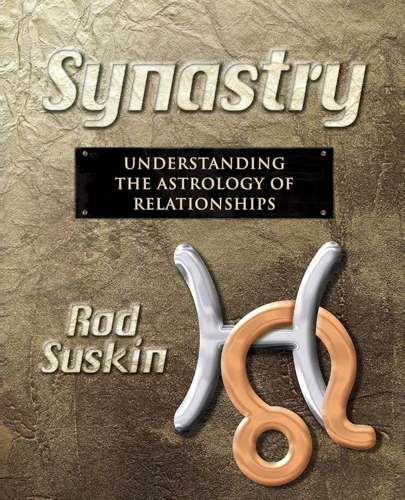
When it comes to navigating astrological aspects in relationships, there are several essential tips that can help foster understanding and harmony. Communication and Understanding are key aspects to focus on, as open and honest discussions about astrology and its influence can strengthen the connection between partners. Developing Emotional Awareness and Empathy is crucial, as recognizing and validating each other’s emotions can create a deeper bond. Additionally, practicing Compromise and Adaptability is vital, as astrological aspects can sometimes create challenges that require flexibility and willingness to work through. By embracing these tips, individuals can navigate the complexities of astrological aspects in relationships with grace and understanding.
1. Communication and Understanding
One of the significant aspects of astrological aspects in synastry is their impact on communication and understanding within a relationship. When analyzing the compatibility between two individuals, the alignment of their Mercury and Venus is crucial. A harmonious aspect such as a trine or sextile between Mercury, the planet of communication, and Venus, the planet of love and harmony, enhances the flow of understanding and fosters effective communication. This creates a sense of ease and connection between partners, allowing them to express their emotions, thoughts, and desires openly. On the other hand, challenging aspects like a square or opposition between Mercury and Venus can result in miscommunications, misunderstandings, and even conflicts. These aspects may indicate different communication styles, conflicting values, or difficulties in expressing affection. It is important for partners to be aware of these potential challenges and make conscious efforts to improve their communication and cultivate understanding. Building strong communication skills, active listening, and practicing empathy can help overcome the hurdles posed by challenging aspects and pave the way for healthier and more meaningful connections. [link to /ophiuchus-symbol-personality-traits/]
2. Emotional Awareness and Empathy
When examining astrological aspects in synastry, one crucial area to consider is emotional awareness and empathy. This aspect plays a significant role in determining the emotional compatibility between individuals. The opposition aspect, for example, can bring about a heightened sense of emotional polarity and intensity. It often indicates a deep attraction and connection between partners, but it can also lead to emotional power struggles and conflicts if not handled with care. On the other hand, a trine aspect fosters emotional harmony and understanding, creating a sense of ease and empathy in the relationship. Partners with this aspect are likely to have a natural ability to understand and support each other emotionally. Similarly, the sextile aspect also promotes emotional connection and empathy, albeit to a lesser extent. It encourages open communication and a willingness to understand each other’s feelings. However, it is important to note that even challenging aspects such as the square or quincunx can contribute to the development of emotional awareness and empathy. These aspects may require more effort and conscious awareness to navigate, but they can lead to significant personal growth and greater emotional understanding if actively addressed. When exploring the impact of astrological aspects in synastry, emotional awareness and empathy are key factors that profoundly influence the dynamics and depth of a relationship.
3. Compromise and Adaptability
Finding a balance between two individuals with differing needs and desires is crucial for the success of any relationship, and this is where the qualities of compromise and adaptability come into play. Astrological aspects in synastry can shed light on how well two individuals can navigate and accommodate each other’s differences.
1. Compromise: Astrological aspects reveal the areas where compromise is essential for maintaining harmony. For example, a challenging square aspect between two individuals’ Venus placements may indicate conflicting love languages or differing values in relationships. In such cases, compromise becomes vital to finding common ground and fostering understanding. Both parties must be willing to meet halfway, make concessions, and find ways to bridge the gap between their desires.
2. Adaptability: In addition to compromise, adaptability is crucial when it comes to navigating the ebb and flow of a relationship. Astrological aspects can indicate how well two individuals are able to adjust to each other’s changing needs and circumstances. For instance, a dynamic opposition aspect between Mars placements can signify differences in energy levels and approaches to taking action. Cultivating adaptability allows for a willingness to embrace change, accommodate evolving circumstances, and find new ways to work together.
Both compromise and adaptability require effective communication, empathy, and a willingness to let go of rigidity. Recognizing that relationships are dynamic and ever-evolving is key to fostering a healthy and thriving connection. By embracing compromise and adaptability, individuals can navigate the complexities of astrological aspects, allowing for growth, understanding, and a deeper bond with their partner.
Conclusion

In conclusion, exploring the impact of astrological aspects in natal chart synastry provides valuable insights into the dynamics of relationships and the potentials for compatibility, challenges, growth, and transformation. The aspects, such as conjunctions, oppositions, trines, squares, sextiles, and quincunxes, reveal the interplay between planets and the energies they bring to our connections with others. By analyzing case studies and examining the influence of personal and outer planets, we can gain a deeper understanding of how these aspects shape our interactions. It is important to recognize both the positive and challenging aspects in synastry, as they contribute to the complex tapestry of relationship dynamics. Effectively navigating astrological aspects in relationships requires open communication, emotional awareness, empathy, compromise, and adaptability. Embracing the insights provided by astrology allows us to navigate the intricacies of human connections with greater understanding and appreciation for the cosmic forces at play. As we delve into the mysteries of astrology, we discover the endless possibilities for growth and transformation that arise from the interplay of astrological aspects in our lives.
Frequently Asked Questions

1. What is the significance of astrological aspects in natal chart synastry?
Astrological aspects in natal chart synastry reveal the dynamic interactions between planets, offering insights into the compatibility, challenges, and growth potential within a relationship.
2. How do conjunctions affect relationships in synastry?
Conjunctions bring together the energies of two planets, intensifying their influence on the individuals involved. This can create a strong sense of connection and shared traits.
3. What challenges can arise from oppositions in synastry?
Oppositions highlight the tension of opposing forces between two planets in synastry. This can lead to power struggles, differences in values, and the need for compromise and balance.
4. What benefits can trines bring to relationships in synastry?
Trines signify harmonious angles, fostering ease and flow between planets. In synastry, trines can promote understanding, cooperation, and a sense of shared purpose.
5. How do squares impact relationships in synastry?
Squares create a challenging angle between planets, causing internal and external friction. In synastry, squares can lead to conflicts, obstacles, and the need for personal growth and transformation.
6. What opportunities can arise from sextiles in synastry?
Sextiles form supportive aspects, indicating opportunities for growth and cooperation between planets. In synastry, sextiles can facilitate communication, shared goals, and mutual support.
7. How do quincunxes influence relationships in synastry?
Quincunxes represent an aspect of dissonance and require adjustment in synastry. They can create challenges in understanding each other’s needs and may call for adaptability and compromise.
8. What are personal planets and how do they impact synastry?
Personal planets include the Sun, Moon, Mercury, Venus, and Mars. These planets represent individual qualities and play a significant role in shaping the dynamics and compatibility within synastry.
9. What role do outer planets play in synastry?
Outer planets, such as Jupiter, Saturn, Uranus, Neptune, and Pluto, have a collective and generational influence. Their placement in synastry can reveal themes of growth, transformation, and spiritual connection.
10. What differentiates major aspects from minor aspects in synastry?
Major aspects, such as conjunctions, oppositions, trines, and squares, carry more significant influence and can have a profound impact on the relationship dynamics in synastry. Minor aspects, like sextiles and quincunxes, provide additional nuances and subtleties to the overall picture.
References
- Aspects of Love and Relationships: Compatibility in Astrology
- Guide To Synastry: What To Know About Relationship …
- In the synastry chart, are aspects or placement of houses …
Frequently Asked Questions

1. How do astrological aspects in natal chart synastry impact relationships?
Astrological aspects in natal chart synastry have a significant impact on relationships by influencing the dynamics, compatibility, and growth potential between individuals.
2. What are the different types of astrological aspects?
There are several types of astrological aspects, including conjunction, opposition, trine, square, sextile, and quincunx, each with its own unique influence on relationships
3. What is the significance of astrological aspects in synastry?
Astrological aspects in synastry reveal the potential for compatibility, harmony, challenges, friction, and growth between individuals in a relationship.
4. How do personal and outer planets interplay with astrological aspects?
Personal planets, such as the Sun, Moon, and Venus, represent core aspects of an individual’s personality, while outer planets, such as Uranus, Neptune, and Pluto, bring transformation and collective energies to relationship dynamics.
5. What is the difference between major aspects and minor aspects in synastry?
Major aspects, such as the conjunction, opposition, and trine, have a stronger influence on relationship dynamics, while minor aspects, such as the sextile and quincunx, provide nuance and complexity to the interplay of energies.
6. Can astrological aspects indicate compatibility and harmony in relationships?
Astrological aspects can indicate compatibility and harmony in relationships by revealing shared values, goals, and emotional resonance between individuals.
7. How do astrological aspects contribute to challenges and friction in relationships?
Astrological aspects can contribute to challenges and friction in relationships by highlighting areas of potential conflict, contrasting energies, and growth opportunities through navigating differences.
8. Do astrological aspects facilitate growth and transformation in relationships?
Yes, astrological aspects have the potential to facilitate growth and transformation in relationships by challenging individuals to evolve, learn from each other, and reach higher levels of consciousness.
9. What can a Sun-Moon conjunction indicate in synastry?
A Sun-Moon conjunction in synastry suggests a deep emotional connection, mutual understanding, and a strong sense of shared identity between individuals.
Effective communication and understanding can help navigate astrological aspects in relationships by fostering empathy, open dialogue, and the ability to navigate differences in a constructive manner.
References
- The Top Five Synastry Aspects for a Significant Relationship
- Relationship Astrology Techniques: Synastry, Composite, …
- In the synastry chart, are aspects or placement of houses …

